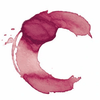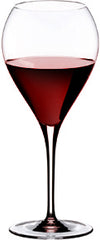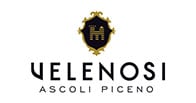描述
In the past sour cherry wine was produced to make robust and tannic wine more enjoyable. According to his biographer and trusted librarian Vespasiano da Bisticci, the duke Federico da Montefeltro “hardly drink wine if it was not cherry or pomegranate wine” (“quasi non beveva vino se non de ciriege o de granate”). Lately, it was considered a wine for women, to present to the fair sex for its fragrances, its smoothness and roundness. Currently, it is considered as a meditation wine, to taste and savour in company, rediscovering ancient flavours.
獎項

香水

顏色

味道
服務於:
14 -16 °C.
長壽:
10 - 15 years

- 創業年份: 1984
- 釀酒師: Attilio Pagli
- 生產的瓶子: 2.500.000
- 公頃: 142
閱讀更多


| Name | Velenosi Querciantica Vino e Visciole |
|---|---|
| Type | Red dessert wine dessert wine aromatised |
| Denomination | VdT |
| Size | 0,75 l |
| Alcohol content | 13.5% 按體積 |
| Grape varieties | 100% Lacrima |
| Country | Italy |
| Region | Marche |
| Vendor | Velenosi |
| Story | The production of flavoured wines is an ancient tradition of Marche region, dating back to the Middle Age and the time of noble castles, which survives to present thanks to the farmers’ heritage. It is produced in the municipalities of Candiano and Pergola in the province of Pescara, and in the territories of Castelli di Jesi in the province of Ancona. The recipes for this wine significantly differ from one place to the other, and from one winery to the other. The basic ingredient for this cherry wine is an ancient variety of wild cherry, namely “visciola” (Prunus cerasus), which has a deep red colour and sour taste. |
| Origin | Ascoli Piceno |
| Wine making | The basic ingredient for this cherry wine is an ancient variety of wild cherry, namely “visciola” (Prunus cerasus), which has a deep red colour and sour taste. Based on the traditional recipe, sour cherries are harvested when ripe, during the first weeks of July, and left to soak in sugar, partly whole and partly smashed; thus fermentation starts and slowly brings the juice to a delicate and aromatic syrup. This product is then decanted for a few days and finally filtered. The result is a syrup with a high sugar concentration, which is added to the wine starting a second fermentation. So wine and syrup are blended together. |
| Allergens | Contains sulphites |







